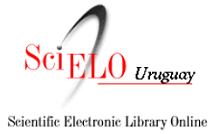Xantofilas en la yema de huevo en envase natural
Una valiosa herramienta para la salud ocular y el estatus antioxidante
Palabras clave:
Carotenoides de la yema, Xantofilas, LuteínaResumen
Carotenoids as xanthophyll are particular isoprenoids compounds with large function in the human organism, as anti-inflammatory and antioxidant (Miao et al., 2024). Particularly, lutein and zeaxanthin are selectively taken up into the macula of the eye where they may protect against age-related macular degeneration. Meso-zeaxanthin is also found in the macula, derived from lutein. Xanthophyll has been associated with a lower oxidative stress (Bohn et al., 2019) and eggs is a good source of carotenoids for human depending on the hen’s diet. Particularly, meso-zeaxanthin is not commonly found in eggs of laying hens that did not received this carotenoid in their diet (Rasmussen et al., 2012). Then, lutein, zeaxanthin, meso-zeaxanthin and other xanthophyll could be considered as biomarkers of richness of the diet of laying hens in carotenoids and it is a mark of high nutritional value of eggs to minimize the risk of macular degeneration in older people and improve the antioxidant status. The aim of this research was to determine the content of different carotenoids, particularly xanthophyll, lutein, zeaxanthin, astaxanthin and canthaxanthin in yolk eggs coming from a free range system in Uruguay. For this purpose, yolks (fresh and stored for 28 days at 4 ºC ), coming from Hy-Line Brown layers, 60 weeks of age, coming from three Experimental Units (30 eggs each one) in a free range system with conventional diet and alfalfa silo pack included, were extracted with methanol:THF:BHT (50:49.05:0.05) HPLC quality (Merck) and food grade > 99 %, Sigma-Aldrich, respectively, filtered with Whatman 1 and previously injected to HPLC was filtered with 0.45 mu. Then, HPLC Prominence LC-20A (Shimadzu Corporation, Japan), with diode array (SPD-M20A). Column C30 (250 × 4,6 mm, YMC Carotenoid S- 5 μm, Waters Corporation, USA), to 30 ºC, was used. Quantification was realized with external standard for lutein, zeaxanthin, astaxanthin and canthaxanthin. Preliminary results shows for lutein: 1806 ± 120 µg/100 g yolk fresh, for zeaxanthin: 1258 ± 123 µg/100g yolk fresh, for astaxanthin: 98 ± 4 µg/100g yolk fresh and for canthaxanthin: 601 ± 34 µg/100g yolk fresh. Meso-zeaxanthin is running because it was detected in the yolk analyzed here. For stored eggs, values were significantly different (P<0.05), for lutein (1468 ± 120 µg/100 yolk stored) and for zeaxanthin (1000 ± 23 µg/100g yolk stored). Other xanthophyll were not detected in stored yolks. In conclusion, the contribution of the yolk egg to xanthophyll status, particularly in lutein for eye health, even when stored for 28 days at 4oC is high and eggs have a special advantage as carriers for the enrichment of these lipid-soluble nutrients. Research is carrying up to determine the best condition for storing eggs that minimize lost of xanthophyll.
Descargas
Publicado
Cómo citar
Número
Sección
Licencia
Derechos de autor 2025 Sociedad de Medicina Veterinaria del Uruguay-Facultad de Veterinaria, Universidad de la República

Esta obra está bajo una licencia internacional Creative Commons Atribución 4.0.











